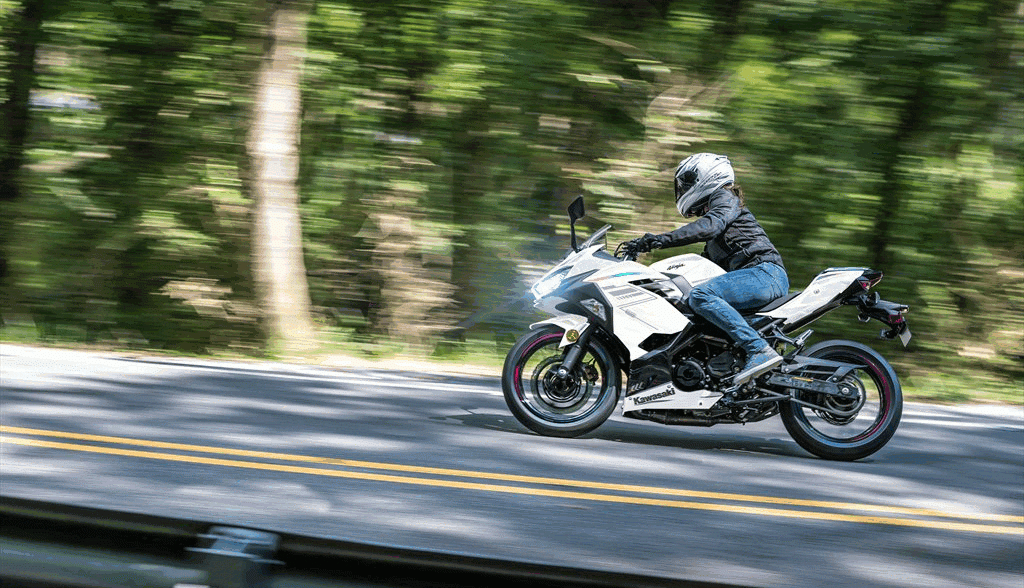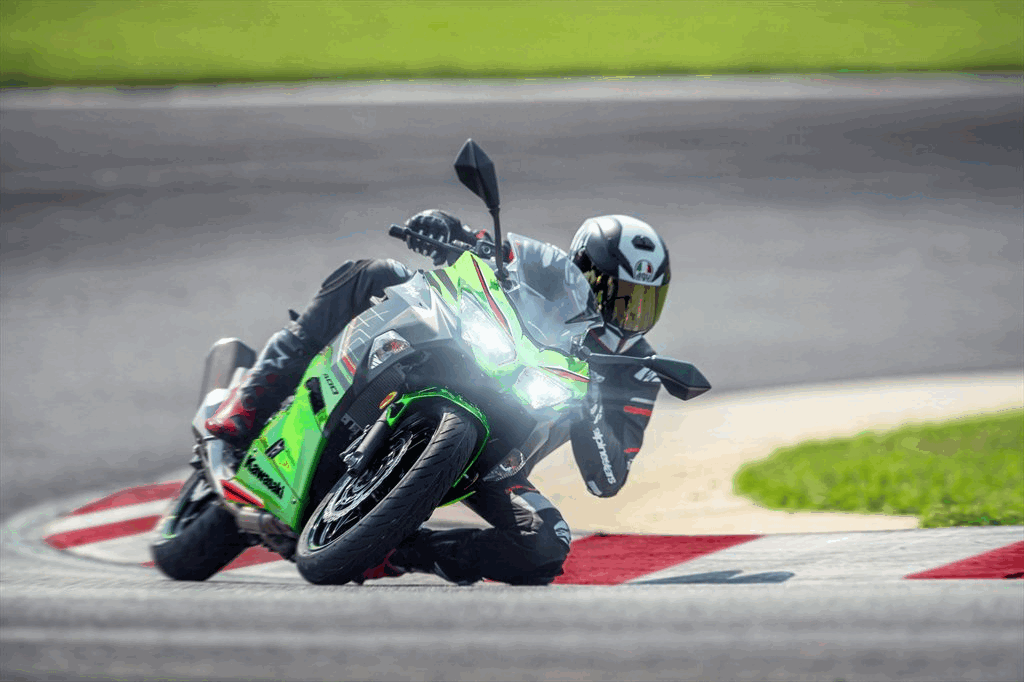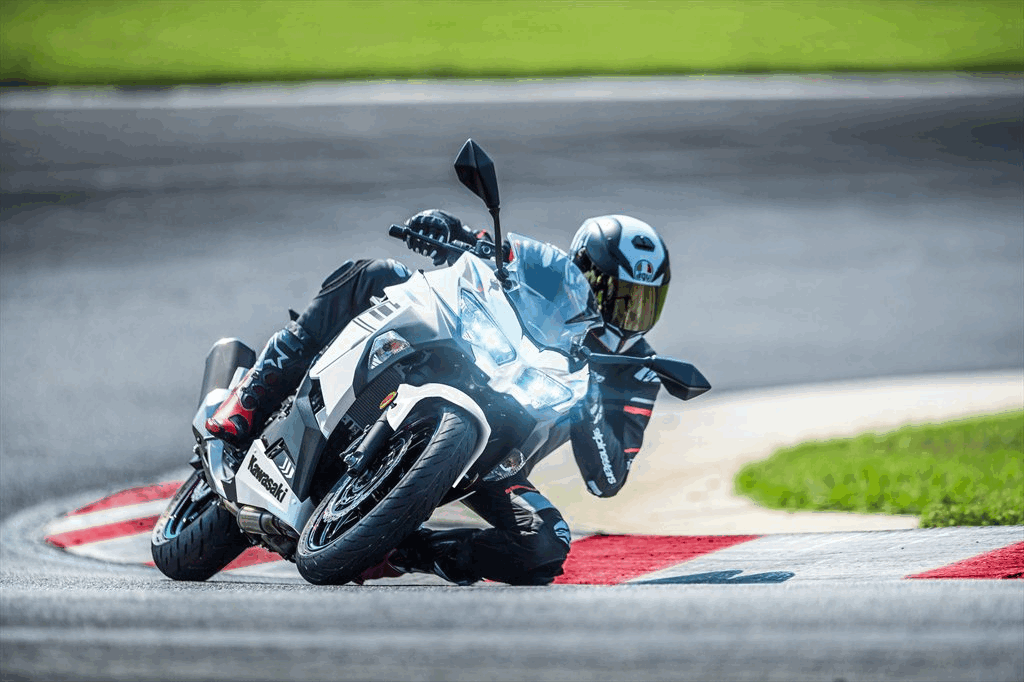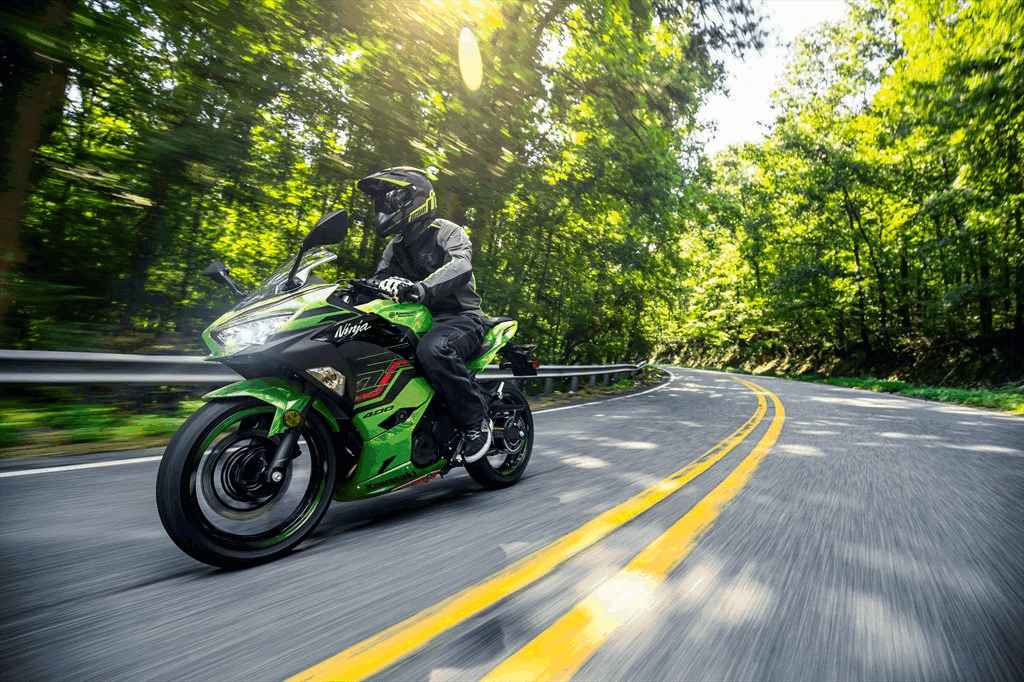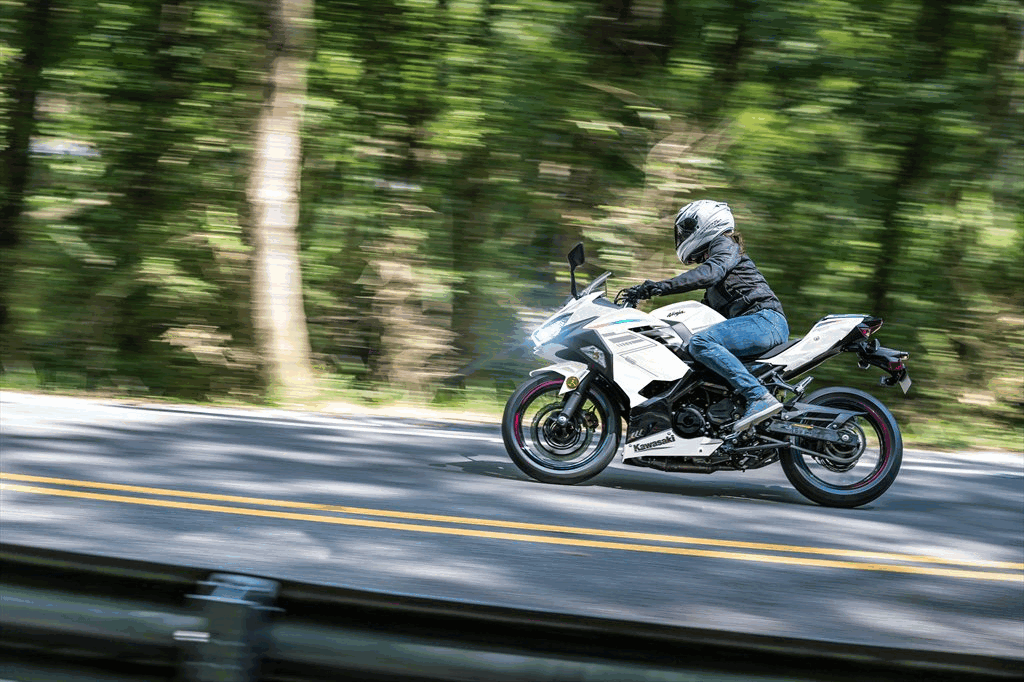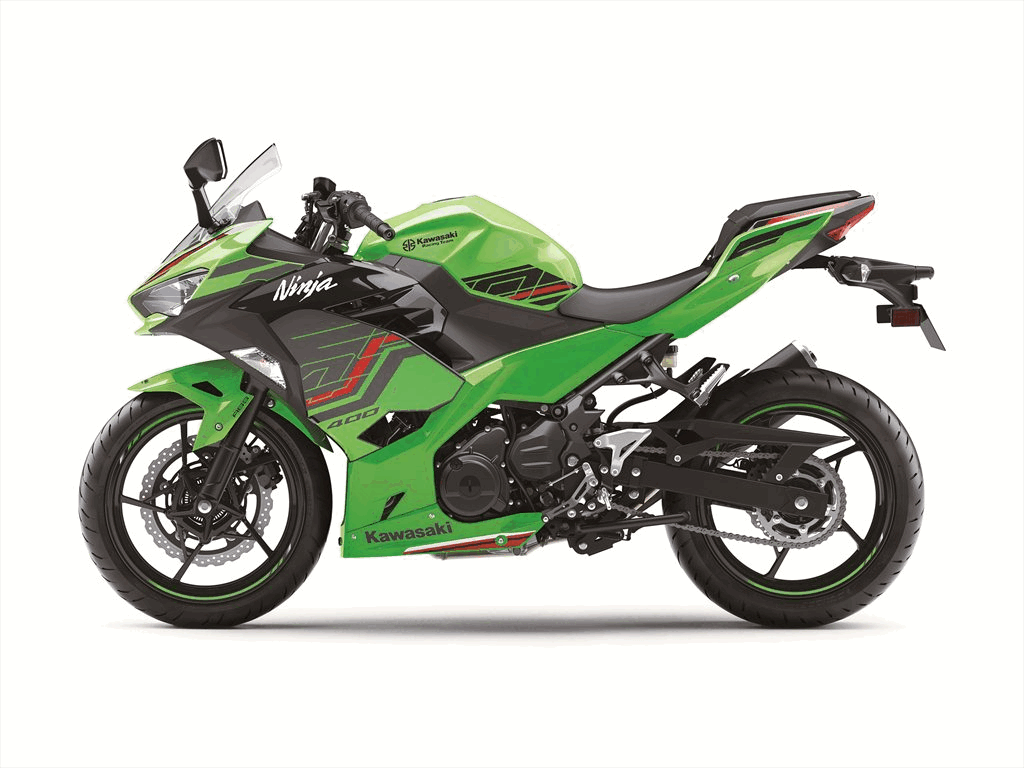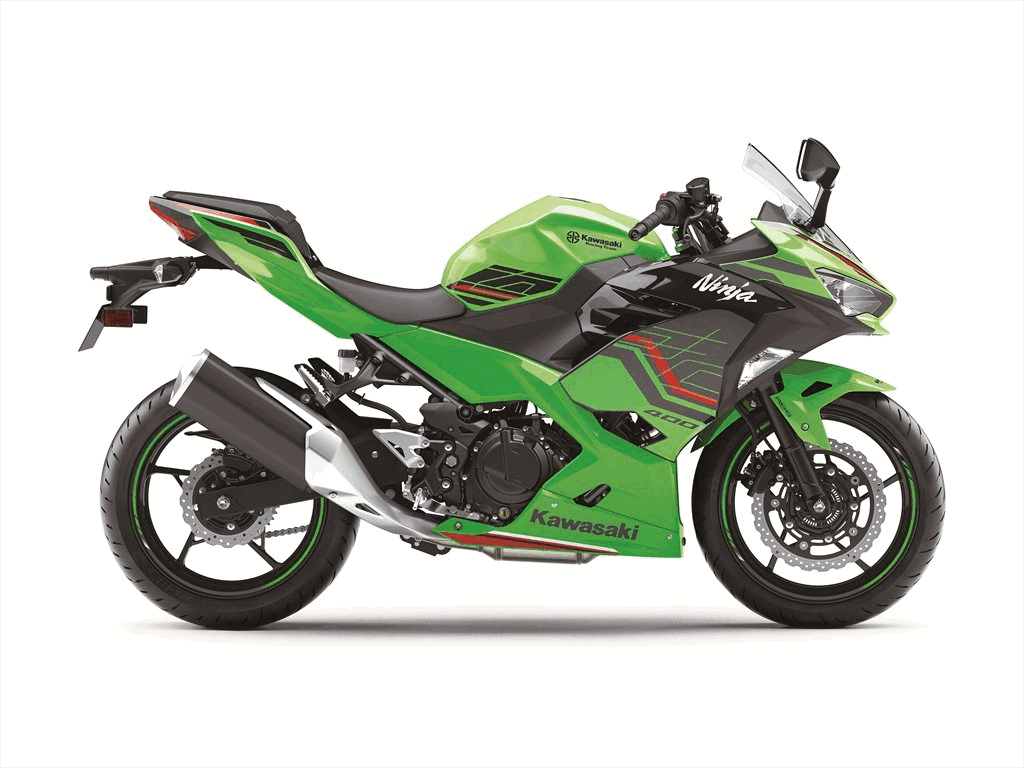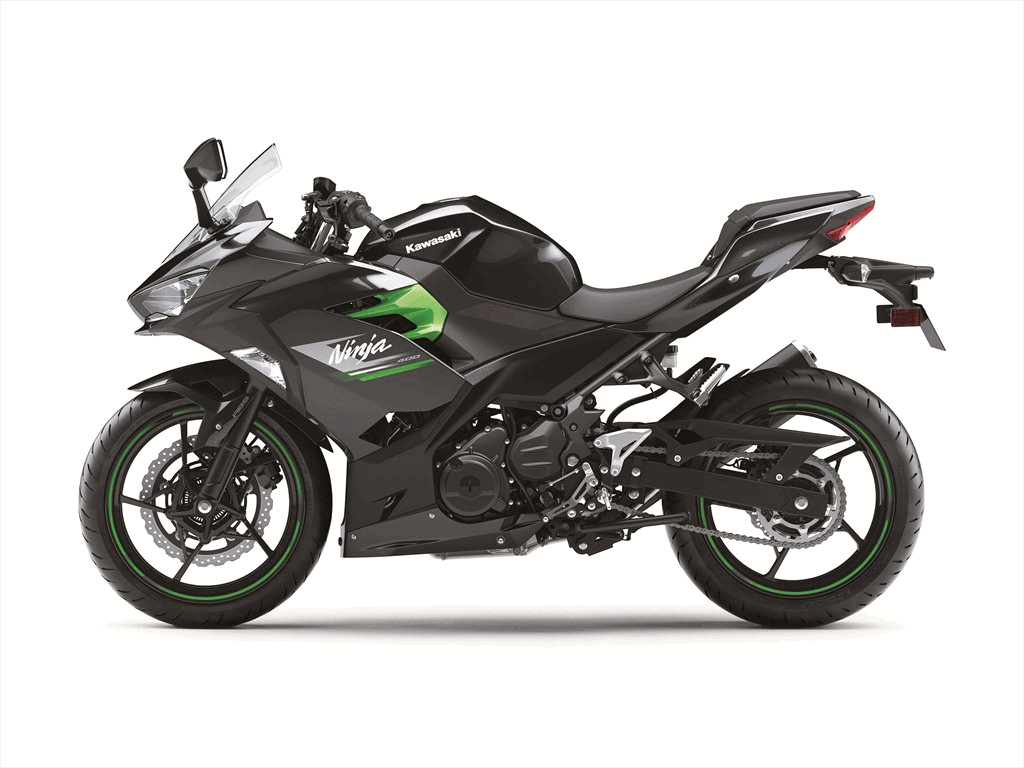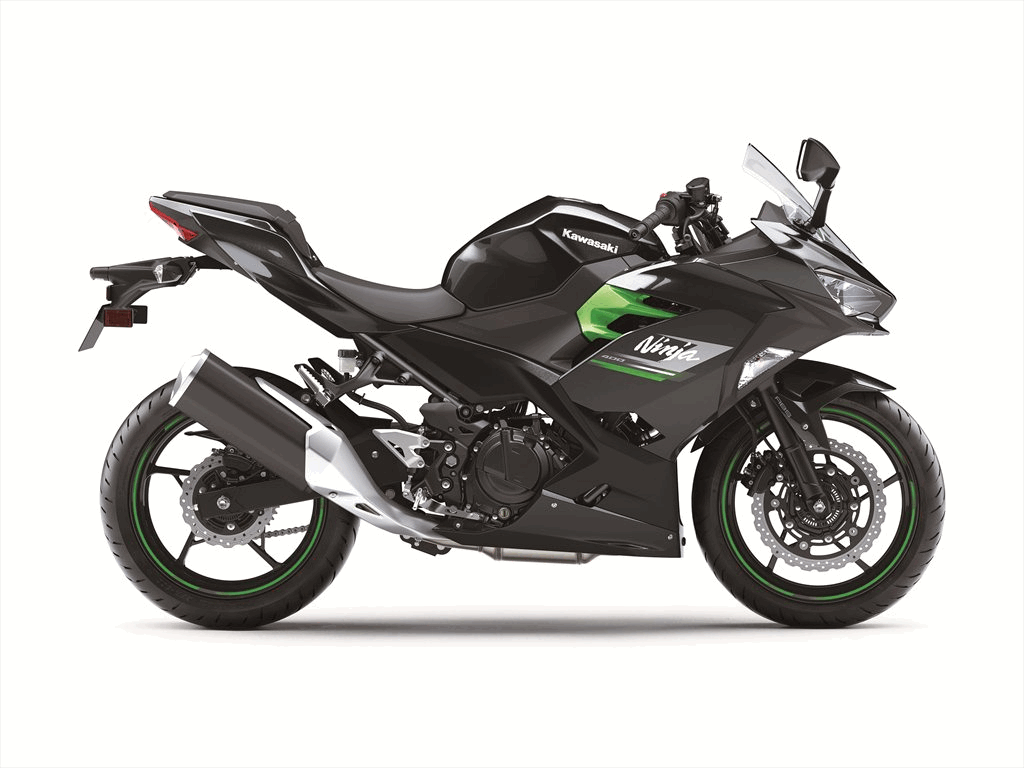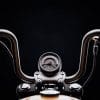The 2023 Kawasaki Ninja 400 Is A Great Sportbike Entry
Contents
For 2023, Kawasaki has updated the Ninja 400 ABS which is designed for riders who are looking for a sleek and that can handle both city streets and winding roads while being accessible to newer riders. While the Ninja is powered by the smallest engine of Kawasaki’s Ninja family, the 399cc liquid-cooled, parallel-twin engine still delivers 45 horsepower and 28 lb-ft of torque and a nimble ride. The bike has a six-speed transmission and a slipper clutch, which makes downshifting smoother and easier. The Ninja 400 ABS also comes with a lightweight trellis frame, which improves the bike’s agility and handling. Bringing you to a stop on the Ninja 400 is the single 310mm front disc and a single 220mm rear which provide excellent stopping power and control. ABS is an extra cost add on which adds an extra layer of safety.
The Ninja 400 ABS also includes a digital instrument panel that displays speed, rpm, fuel level, and other information. The seat is designed to be comfortable for both riders and passengers, and the bike has a sleek and aerodynamic fairing that reduces wind resistance at high speeds. The baby ninja includes features that make it competitive with the other Japanese brands in the class and is an excellent choice for those entering the sportbike world.
The 2023 Kawasaki Ninja Ninja 400 starts at: $5,299 USD/$7,299 CAD
On this page: we’ve curated specs, features, news, photos/videos, etc. so you can read up on the new 2023 Kawasaki Ninja Ninja 400 in one place.
Model Overview
General Info
- Price: Ninja 400 $5,299 USD/$7,299 CAD
- Key Features:
-
- 310mm semi-floating front disc brake
- LED headlights
- Brembo brakes
- Lightweight trellis frame
Main Specs
- Engine: 399 cc liquid-cooled, 4-stroke, DOHC 8-valve parallel twin
- Power: 44.8 horsepower
- Torque: 27 lb-ft
- Weight: 366 lbs (166 kgs)
- Seat Height: 30.9 inches (785 mm)
Competitors
2023 Kawasaki Ninja 400 Specifications
ENGINE |
||
| Engine | 399cc, 4-stroke, Parallel Twin, DOHC, liquid-cooled | |
| Power | 44.8 Hp | |
| Bore x Stroke | 70.0 x 51.8mm | |
| Compression Ratio |
11.5:1
|
|
| Fuel System | DFI® with dual 32mm throttle bodies | |
| Starter | Electric | |
| Electronic Rider Aids | ||
DRIVETRAIN |
||
| Clutch | ||
| Transmission | 6-speed | |
| Final Drive | Sealed chain | |
CHASSIS |
||
| Suspension Front | 41mm hydraulic telescopic fork/4.7 in | |
| Suspension Rear | Horizontal back-link with adjustable spring preload/5.1 in | |
| Brakes Front | Single 310mm semi-floating petal-type disc with 2-piston calipers (and ABS) | |
| Brakes Rear |
Single 220mm petal-type disc with single-piston caliper (and ABS)
|
|
| Tires Front | 110/70-17 | |
| Tires Rear | 150/70-17 | |
| Fuel Tank Capacity | 3.7 gal | |
| Color |
Metallic Carbon Gray/Metallic Matte Carbon Gray, Metallic Magnetic Dark Gray/Metallic Matte Twilight Blue, Pearl Blizzard White/Metallic Carbon Gray
|
|
ELECTRICAL |
||
| Ignition | TCBI w/Digital Advance | |
| Spark Plugs | ||
| Headlight | LED | |
| Tail Light | LED | |
DIMENSIONS |
||
| Overall Length | 78.3 in | |
| Overall Width | 28 in | |
| Overall Height | 44.1 in | |
| Wheelbase | 53.9 in | |
| Ground Clearance | 5.5 in | |
| Seat Height | 30.9 in | |
| Curb Weight | 366.0 lb (ABS), 361.6 lb (non-ABS)* | |
WARRANTY |
||
| Warranty | 12 Month Limited Warranty | |
| Kawasaki Protection Plus | 12, 24, 36 or 48 months | |
2023 Kawasaki Ninja 400 Features
Assist & Slipper Clutch
Under normal operation, the assist cam functions as a self-servo mechanism, pulling the clutch hub and operating plate together to compress the clutch plates. This allows the total clutch spring load to be reduced, resulting in a lighter clutch lever feel when operating the clutch.
When excessive engine braking occurs – as a result of quick downshifts (or an accidental downshift) – the slipper cam comes into play, forcing the clutch hub and operating plate apart. This relieves pressure on the clutch plates to reduce back-torque and helps prevent the rear tire from hopping and skidding. This race-style function is particularly useful when sport or track riding.
Economical Riding Indicator
While effective vehicle speed and engine speed may vary by model, paying attention to conditions that cause the “ECO” mark to appear can help riders improve their fuel efficiency – a handy way to increase cruising range. Further, keeping fuel consumption low also helps minimize negative impact on the environment.
ABS (Anti-lock Brake System)
ERGO-FIT
ERGO-FIT® is an interface system designed to allow riders to find their ideal riding position. Various points of the chassis interface (the handlebar, footpegs and seat, etc.) can be adjusted through a combination of interchangeable parts and parts with adjustable positions. This enables a wide range of riders to find a riding position that offers both comfort and control. Feeling at one with their machine, they will be able to experience how Kawasaki machines are fun and rewarding to ride.
2023 Kawasaki Ninja 400 Photos
2023 Kawasaki Ninja 400 Videos
2023 Kawasaki Ninja Ninja 400 review by Peter Lowe One:
2023 Kawasaki Ninja Ninja 400 Review by Autocar India:
Links
Kawasaki Official Websites


